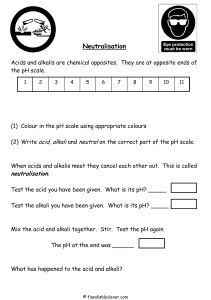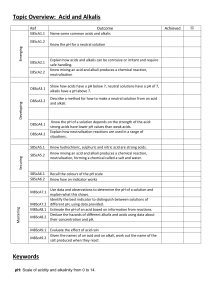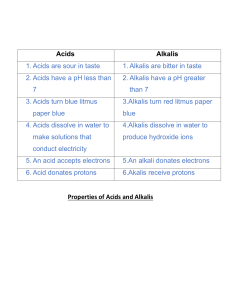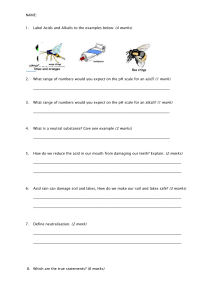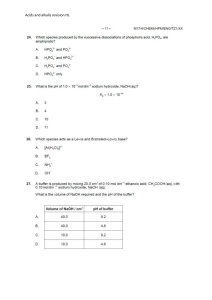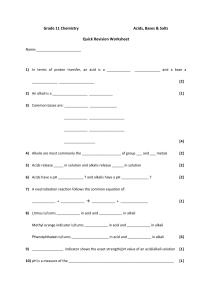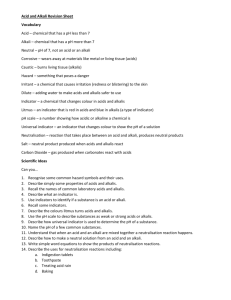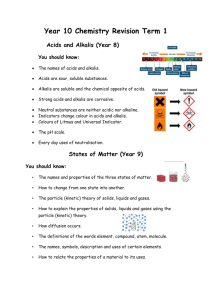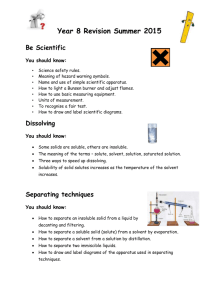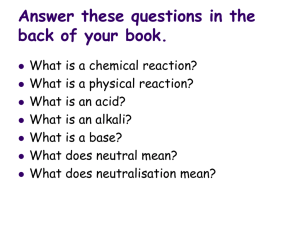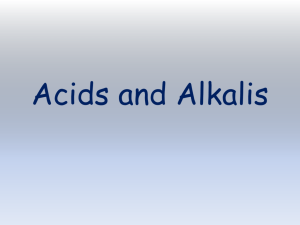Acids and alkalis
advertisement
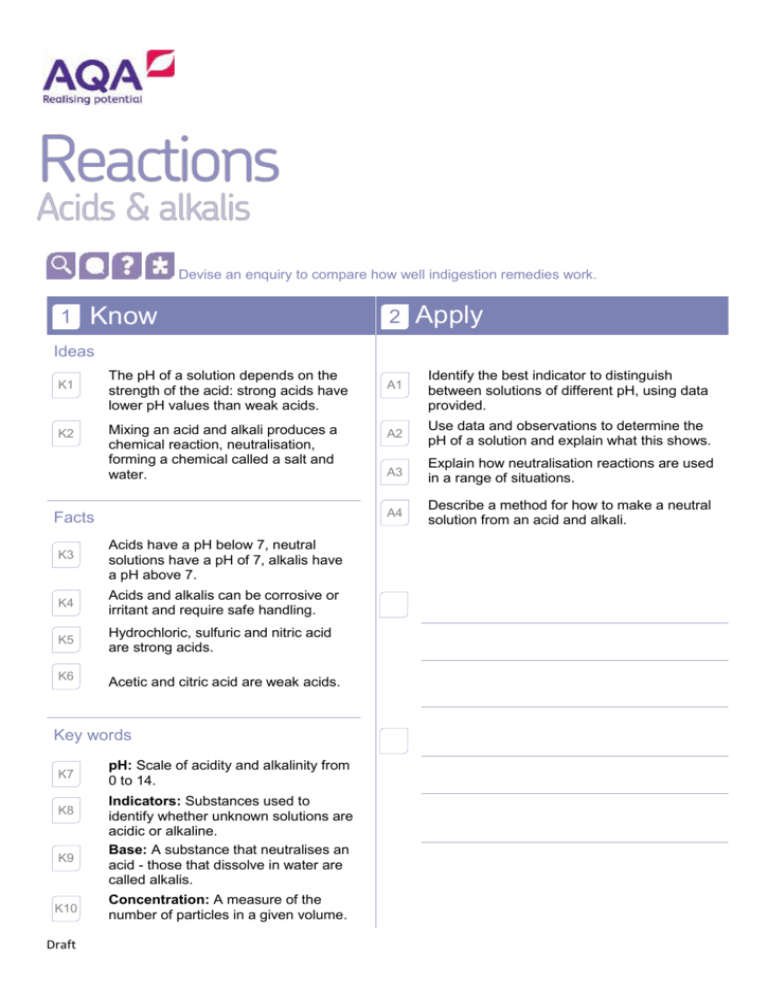
Devise an enquiry to compare how well indigestion remedies work. 1 Know 2 Apply Ideas K1 K2 The pH of a solution depends on the strength of the acid: strong acids have lower pH values than weak acids. Mixing an acid and alkali produces a chemical reaction, neutralisation, forming a chemical called a salt and water. Facts K3 Acids have a pH below 7, neutral solutions have a pH of 7, alkalis have a pH above 7. K4 Acids and alkalis can be corrosive or irritant and require safe handling. K5 Hydrochloric, sulfuric and nitric acid are strong acids. K6 Acetic and citric acid are weak acids. Key words K7 K8 K9 K10 Draft pH: Scale of acidity and alkalinity from 0 to 14. Indicators: Substances used to identify whether unknown solutions are acidic or alkaline. Base: A substance that neutralises an acid - those that dissolve in water are called alkalis. Concentration: A measure of the number of particles in a given volume. A1 Identify the best indicator to distinguish between solutions of different pH, using data provided. A2 Use data and observations to determine the pH of a solution and explain what this shows. A3 Explain how neutralisation reactions are used in a range of situations. A4 Describe a method for how to make a neutral solution from an acid and alkali. 3 E1 E2 E3 Draft Extend Given the names of an acid and an alkali, work out the name of the salt produced when they react. Deduce the hazards of different alkalis and acids using data about their concentration and pH. Estimate the pH of an acid based on information from reactions.
